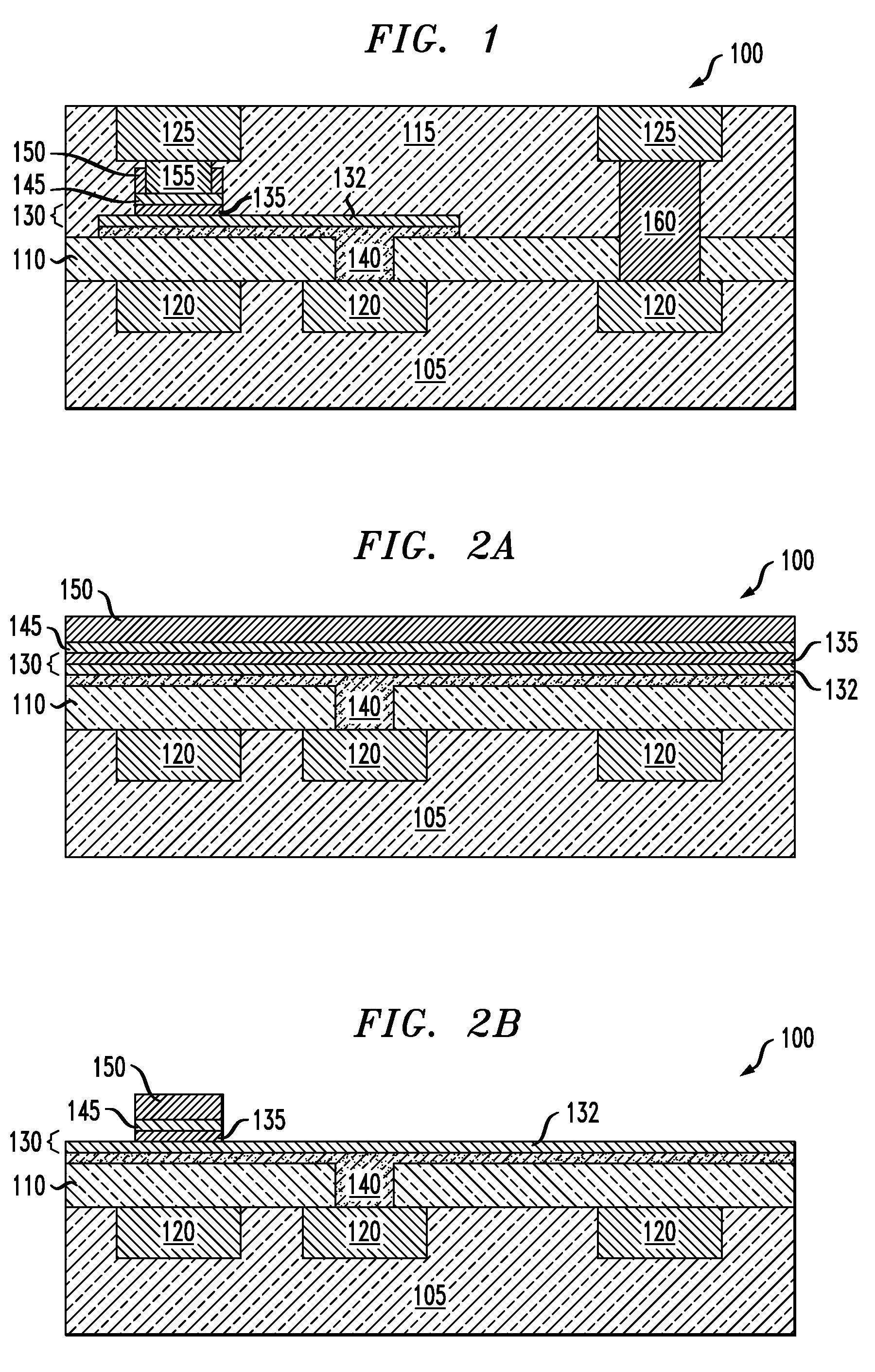Method of Forming Vertical Contacts in Integrated Circuits
a technology of integrated circuits and vertical contacts, which is applied in the direction of semiconductor devices, semiconductor/solid-state device details, electrical apparatus, etc., can solve the problems of non-ideal patterning of mtj elements, non-ideal mtj shapes, and irreproducible device behavior, so as to reduce the cost and complexity of manufacturing the integrated circui
- Summary
- Abstract
- Description
- Claims
- Application Information
AI Technical Summary
Benefits of technology
Problems solved by technology
Method used
Image
Examples
Embodiment Construction
[0015]The present invention will be described with reference to illustrative embodiments. For this reason, numerous modifications can be made to these embodiments and the results will still come within the scope of the invention. For instance, while the illustrative embodiments describe integrated circuits comprising MTJs and various metallization features, the invention is not limited to these particular features. No limitations with respect to the specific embodiments described herein are intended or should be inferred.
[0016]Although combined in a novel manner, most of the processing steps described herein (e.g., deposition steps, etching steps and photolithography steps) are frequently performed in conventional semiconductor processing, and, as result, will be familiar to one skilled in that art. Moreover, details of the individual processing steps used to fabricate semiconductor devices described herein may be found in a number of publications, for example, S. Wolf and R. N. Tau...
PUM
 Login to View More
Login to View More Abstract
Description
Claims
Application Information
 Login to View More
Login to View More - R&D
- Intellectual Property
- Life Sciences
- Materials
- Tech Scout
- Unparalleled Data Quality
- Higher Quality Content
- 60% Fewer Hallucinations
Browse by: Latest US Patents, China's latest patents, Technical Efficacy Thesaurus, Application Domain, Technology Topic, Popular Technical Reports.
© 2025 PatSnap. All rights reserved.Legal|Privacy policy|Modern Slavery Act Transparency Statement|Sitemap|About US| Contact US: help@patsnap.com



